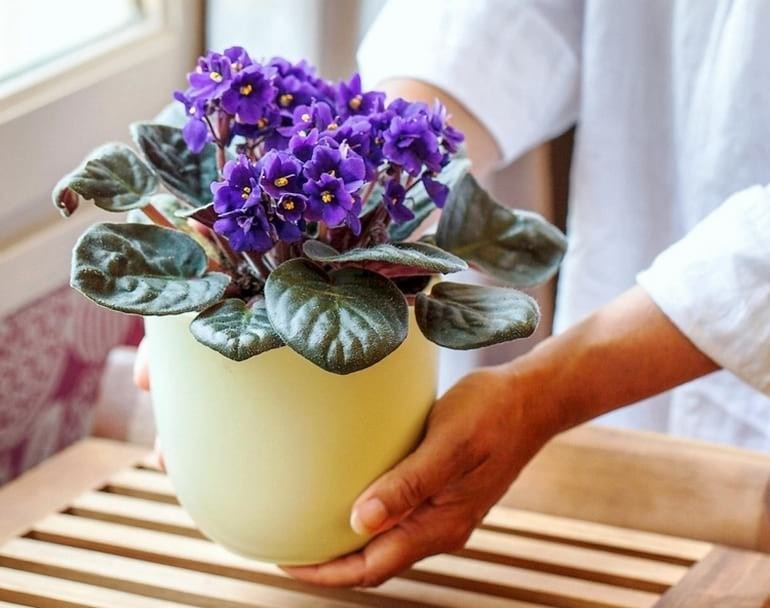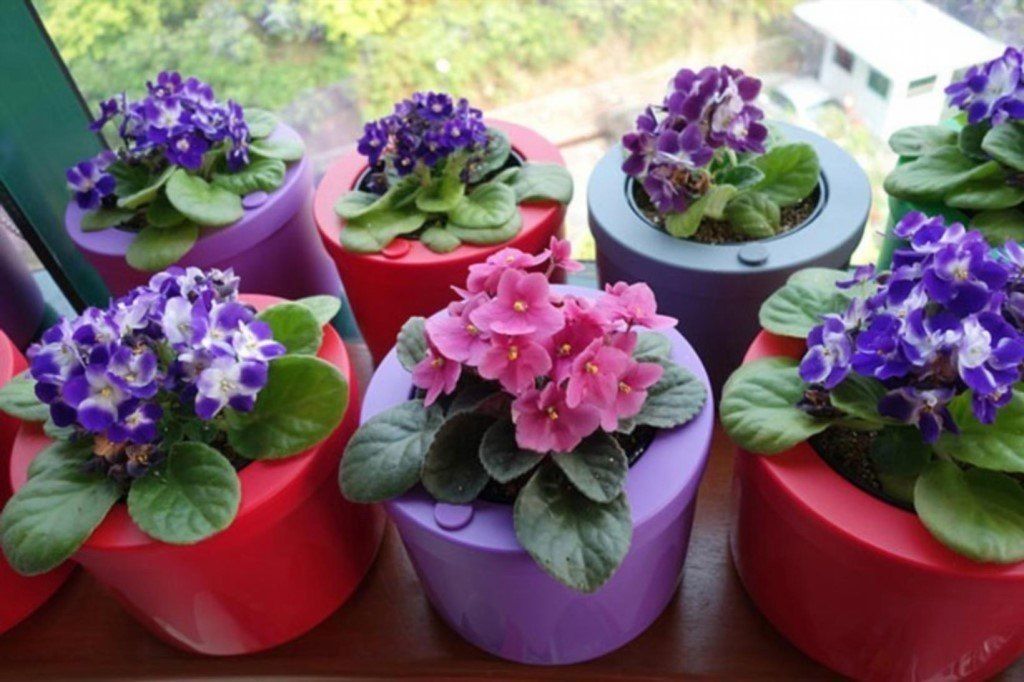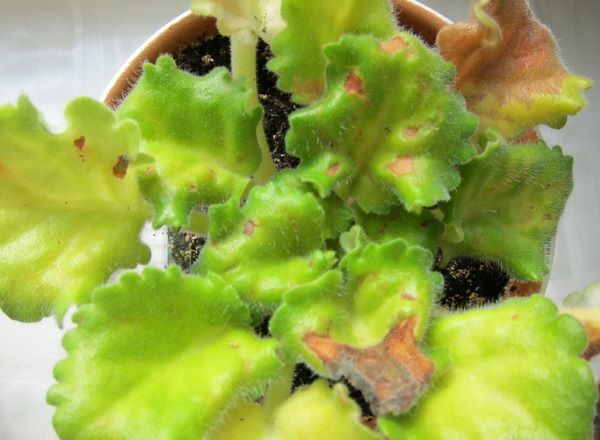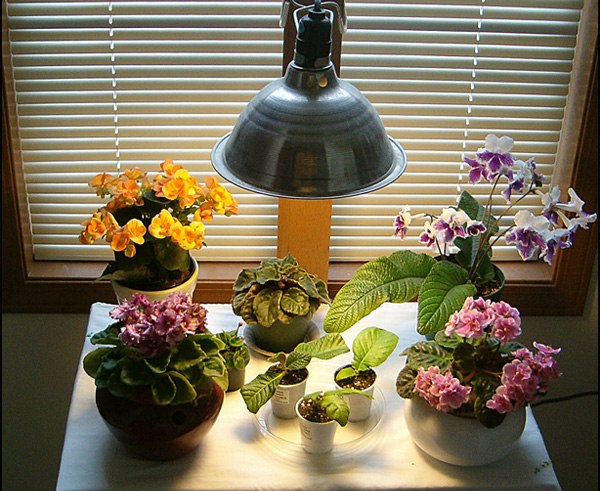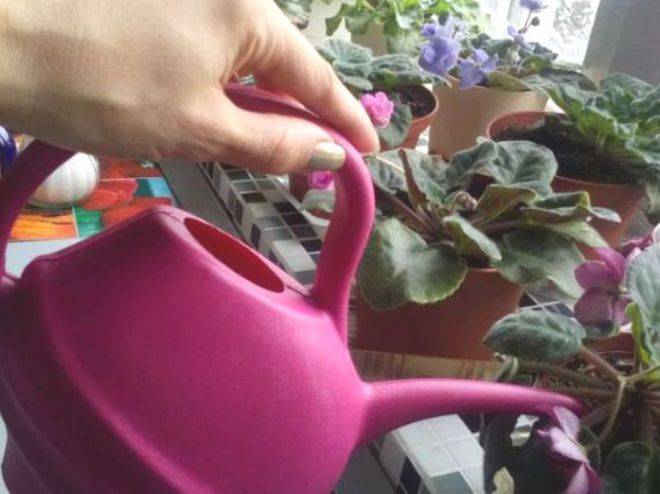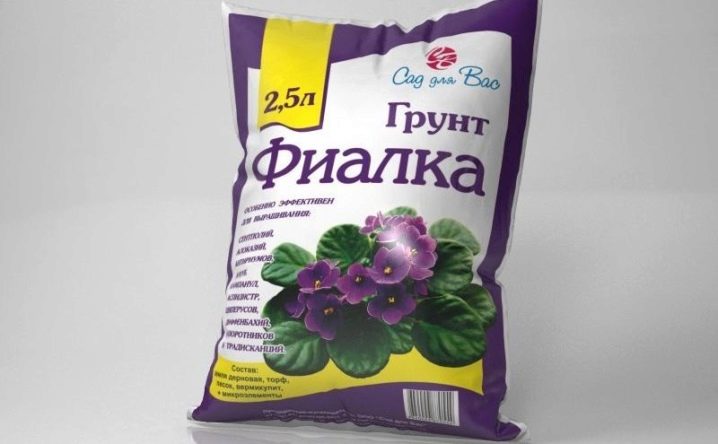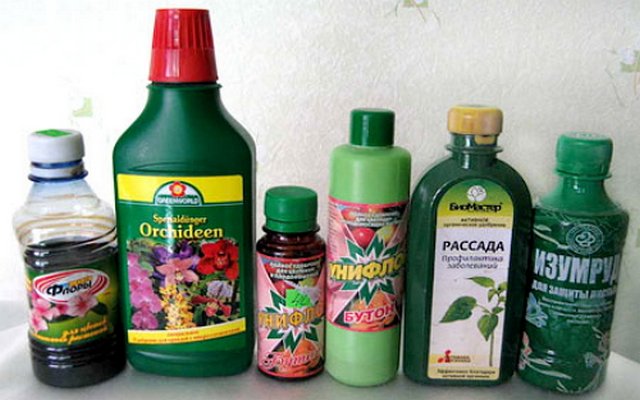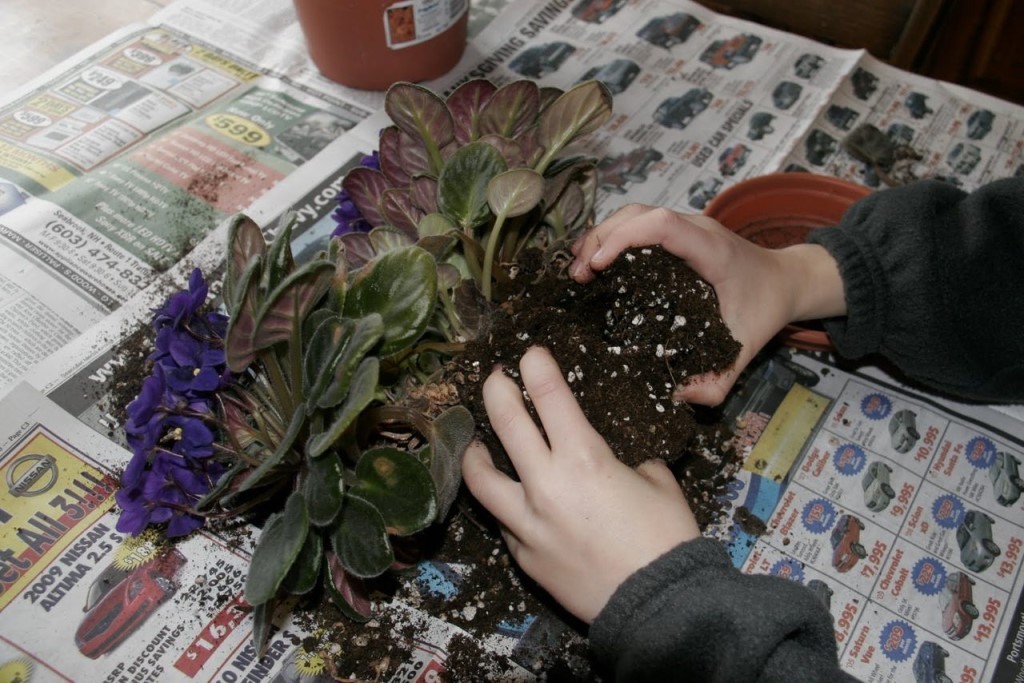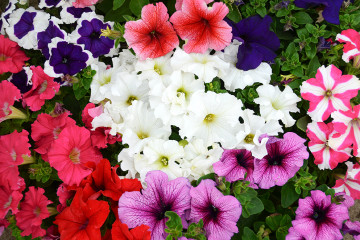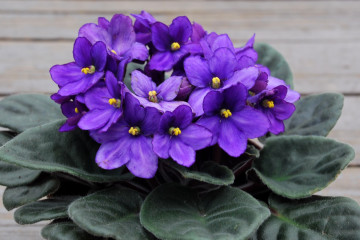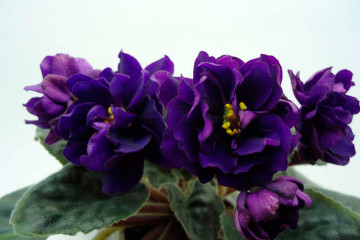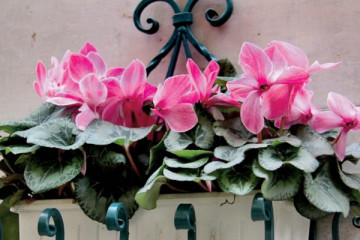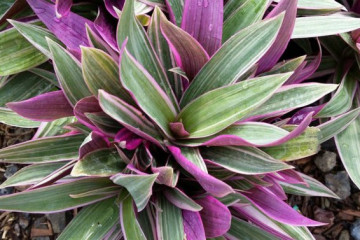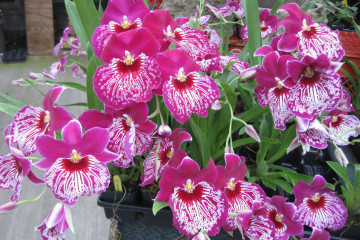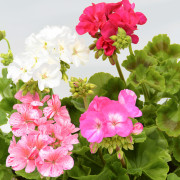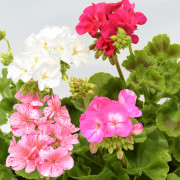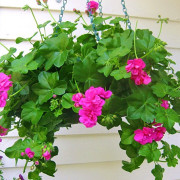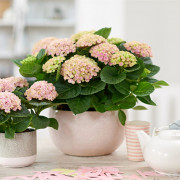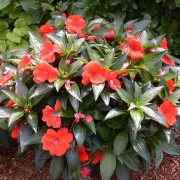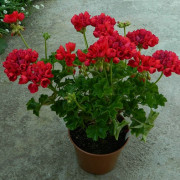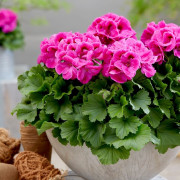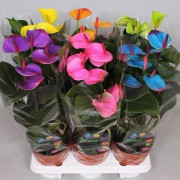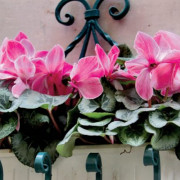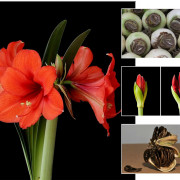Violet - home care for a flower
Content:
Most flower growers love indoor violets for their attractive appearance, the absence of special difficulties in care, the ability to decorate any room. With the exact fulfillment of the conditions specified in the description of the culture, it will delight the owner with flowering for a long time.
Briefly about the history of appearance
The flower called violet refers to both perennial and annual plants. The short stem is adorned with rosette foliage, which often takes on a round shape, and some varieties look like a heart. The edges of the sheet plates are even or wavy, depending on the variety.
In nature, the culture grows in Africa, it can be found in temperate climates. It was first discovered in East African lands, in 1892 by Baron A. Saint-Paul. He saw an unusually beautiful flower while walking. Today, the plant is often called saintpaulia.
Plant characteristics
Perennial species can reach 15-40 cm in height, all subspecies have a similar structure of the root system: thickened and woody. Shortened shoots, slow growth. The leaf plates are smooth or velvety.
The stems, leaves and flowers of the culture can be used for medicinal purposes, and the grains can only be used to obtain new individuals.
What family does it belong to
Violet - flowers that are members of the Violet family. Botanists distinguish about 600 subspecies. Outside open ground, no more than 30 varieties can be grown.
Violet - home care
Proper care of violets at home is not difficult even for novice gardeners, because they can grow both on a personal plot and in ordinary pots. Experts advise to study its features and content requirements before buying a culture.
The home violet is absolutely unpretentious. Under the right conditions, it will live and delight its owner all year round.
What problems can you face
When growing, a number of difficulties can arise:
- The formation of light yellow spots on foliage - associated with direct sunlight and burns. To resolve the issue, the pot is rearranged in partial shade, where the sun cannot reach it. Affected leaf plates must be removed.
- Brown spot - occurs on the leaves with constant watering with cold water. After excision of the damaged parts, the soil is moistened with a warm, previously settled liquid.
- Lack of flowering - a violation occurs with insufficient lighting, improperly selected temperature conditions, or too frequent transplants. How to care for a violet to bloom: carry out timely feeding, do not keep it in the cold and rearrange it on a light windowsill.
Complexity of character
The prevailing opinion about the violet, associated with its unpretentiousness, does not always correspond to reality. The behavior of the crop depends on the variety, some require more frequent watering or top dressing, for others, the priority for life is constant being in partial shade.
Features of caring for home violets
Content issues arise at the initial stages. With the advent of experience, there are no problems with cultivation - they delight the owner with their bright flowers and beautiful greenery. The main thing is to start growing flowers on the windowsill, and problems can always be dealt with.
Temperature
Culture requires compliance with a certain temperature regime. In summer, it is 20-24 degrees, in winter - the level should not be lower than 18 degrees.
Lighting
Saintpaulia (the second name for violets) should be in a well-lit place, while direct sunlight should not fall on its foliage. Do not allow sheet plates to come into contact with glass.
Location in the apartment
Caring for indoor violets means placing flowerpots in an optimal zone for their life. The best choice is an east or west window.
If all window sills are on the south side, then the culture must be shaded - otherwise the sun will cause serious burns to the leaf plates.
Watering
Moistening the earth is carried out three times a week, taking into account the season, soil characteristics and the level of humidity in the room.
- In the summer, the soil dries faster, watering is carried out as it dries.
- In winter, the frequency is reduced - constantly wet soil can become a breeding ground for infectious and fungal diseases.
During the moistening of the soil, water is poured without touching the sheet sockets. For the procedure, you can use thawed, filtered or settled liquid.
Spraying
Another important point in the question of how to care for violets relates to the spraying procedure. The fact is that they react poorly to water ingress on leaf plates and flowers.
Moisture leads to mottling and subsequent rosette decay. The spraying procedure for a flower is prohibited.
Humidity
The flower prefers comfortable conditions in which it grows and develops normally. Optimum humidity values are within 50%.
With the arrival of winter and the start of the central heating, its level is increased by using a wet towel hung on the radiator, transferring the flower closer to the aquarium or installing a container with ordinary water next to it.
Priming
The root system of a flower is of a surface type, which requires careful selection of a soil mixture for growing. Experts recommend looking for light, loose and breathable soil for it. Heavy and clayey soil can kill crops.
When carrying out planting work, a small amount of crushed charcoal must be added to each container. It will prevent the development of root rot. At the bottom of the flowerpot, be sure to lay out small expanded clay or foam balls - to create drainage.
Top dressing
The best fertilizers are phosphorus-potassium compounds. Without them, the violet will not grow and develop normally, will refuse to release buds.
Features of caring for street and wild varieties
When planting crops on a personal plot, special attention is paid to illumination, frequency of watering and top dressing. Most varieties are cold-resistant and do not require transplanting into pots with the arrival of cold weather.
Features of caring for unusual varieties
Rare types of flowers may have separate lighting requirements. For the rest, you need to follow standard measures: feed, water and fertilize the soil in a timely manner.
How to care at different times of the year
For violets room care at home depends on the season. At certain time intervals, they require increased attention.
During the summer, autumn and winter months, no special treatments are required. It is enough to use the above recommendations.
After the onset of cold weather, you need to take care of a sufficient amount of light. The flower may require additional lighting with a special lamp. In parallel, the indicators of air humidity and temperature are constantly monitored.
Preparing plants for planting and transplanting
Repotting work during reproduction is carried out with a complete replacement of the soil. Regular feeding does not save it from gradual depletion; over time, the flower will lack the components necessary for normal life.
Before starting the procedure, a number of actions are carried out:
- The pot is tilted and the bush is slightly scrolled.
- They are trying to remove the violet along with the earth.
- They clean the root system of soil, conduct a thorough examination of the roots: look for signs of decay, old or dead parts (carefully study the middle).
- Remove damaged roots and leaf plates.
- The container is thoroughly washed, a drainage layer is laid on the bottom and soil is poured.
Care of a young plant after planting
After the transplant procedure, the same principles are used as for caring for adults. No specialized manipulations are performed.
Pest Control Prevention
Damage by diseases or parasitic insects affects the general condition of the flower. If there are no buds for a long time, the foliage withers, or strange spots appear on it, then the symptomatology reports an illness or violated supervision rules.
Recovery from illness
Recovery processes after diseases are slow and instant resuscitation should not be expected. Accurately following the advice of experienced florists will help revitalize the flower. They recommend paying attention to watering, lighting in the room, feeding and the level of humidity.
Uzambara and other violets are common subspecies that are grown both at home and in personal plots. Alternative medicine adepts classify them as medicinal, treating diseases of the kidneys, lungs and skin. The rest prefer to admire a beautiful flower, decorating their home with it.It is not difficult to grow a violet, the main thing is not to let it die under the influence of unfavorable conditions.
